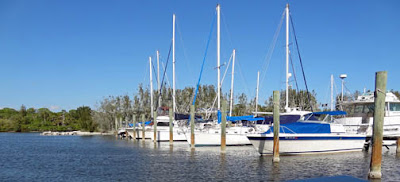Sunny, breezy once again, temps in the mid 70's
Once again we are blessed with a gorgeous day in spite of the ominous forecast of showers. Not a cloud in the sky and what breeze there is is a warm one. I decide to walk over to the retention ponds at the condo complex we are staying at this week in Pompano Beach. Friends of ours have swapped for a time share and as they are often so gracious to do, they have asked us to join them. We noticed a pretty large group of birds hanging around this oasis in the middle of a bustling city yesterday, so I figured I'd go check it out to see if there were any possibilities for avian shots. In short, there were many White ibises, quite a number of Cattle egrets, many Muscovies (gotta be one of the ugliest birds on the planet), and two Egyptian geese.
 |
| Egyptian goose |
While the Egyptian is presently not considered a "countable" species under the rules of the American Birding Association, it is increasing across Florida as a wild species and may in fact eventually become ratified. Until then, we'll just enjoy the view and add it to our list of photographed birds for this year.
The Cattle egrets and the White ibises, however, are indeed countable and made for some fine subjects to photograph this morning.
 |
| Cattle egret |
 |
| Cattle egret and White ibis lift off together |
Regardless, the lighting in the early morning made for some interesting shots with the birds being illuminated while the water behind them was totally underexposed, making the background appear almost black.
I decided to take advantage of this situation and make some close-up portraits of these two Florida birds.















































